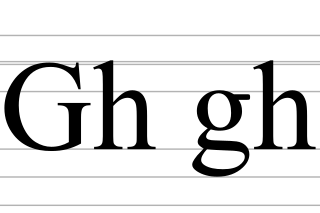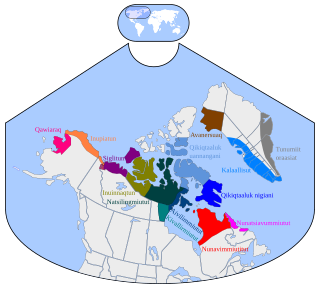Related Research Articles

Aimaq or Aimaqi is the dominant eastern Persian ethnolect spoken by the Aimaq people in central northwest Afghanistan and eastern Iran. It is close to the Dari varieties of Persian. The Aimaq people are thought to have a 5–15% literacy rate.
Motu is a Central Papuan Tip language that is spoken by the Motuans, an indigenous ethnic group of Papua New Guinea. It is commonly used today in the region, particularly around the capital, Port Moresby.
Bernese German, like other High Alemannic varieties, has a two-way contrast in plosives and fricatives that is not based on voicing, but on length. The absence of voice in plosives and fricatives is typical for all High German varieties, but many of them have no two-way contrast due to general lenition.
The phonology of the Persian language varies between regional dialects, standard varieties, and even from older varieties of Persian. Persian is a pluricentric language and countries that have Persian as an official language have separate standard varieties, namely: Standard Dari (Afghanistan), Standard Iranian Persian (Iran) and Standard Tajik (Tajikistan). The most significant differences between standard varieties of Persian are their vowel systems. Standard varieties of Persian have anywhere from 6 to 8 vowel distinctions, and similar vowels may be pronounced differently between standards. However, there are not many notable differences when comparing consonants, as all standard varieties have a similar number of consonant sounds. Though, colloquial varieties generally have more differences than their standard counterparts. Most dialects feature contrastive stress and syllable-final consonant clusters. Linguists tend to focus on Iranian Persian, so this article may contain less adequate information regarding other varieties.
Old English phonology is the pronunciation system of Old English, the Germanic language spoken on Great Britain from around 450 to 1150 and attested in a body of written texts from the 7th–12th centuries. Although its reconstruction is necessarily somewhat speculative, features of Old English pronunciation have been inferred partly from the sounds used in modern varieties of English, partly from the spellings used in Old English literature, partly from analysis of Old English poetry, and partly from comparison with other Germanic languages.
Kuman is a language of Chimbu Province, Papua New Guinea. In 1994, it was estimated that 80,000 people spoke Kuman, 10,000 of them monolinguals; in the 2000 census, 115,000 were reported, with few monolinguals. Ethnologue also reported 70,000 second language speakers in 2021.
This article describes those aspects of the phonological history of English which concern consonants.

Gh is a digraph found in many languages.
Dutch phonology is similar to that of other West Germanic languages, especially Afrikaans and West Frisian.

Inuktun is the language of approximately 1,000 indigenous Inughuit, inhabiting the world's northernmost settlements in Qaanaaq and the surrounding villages in northwestern Greenland.
Unlike many languages, Icelandic has only very minor dialectal differences in sounds. The language has both monophthongs and diphthongs, and many consonants can be voiced or unvoiced.
Lithuanian has 11 vowels and 45 consonants, including 22 pairs of consonants distinguished by the presence or absence of palatalization. Most vowels come in pairs which are differentiated through length and degree of centralization.
Middle English phonology is necessarily somewhat speculative since it is preserved only as a written language. Nevertheless, there is a very large text corpus of Middle English. The dialects of Middle English vary greatly over both time and place, and in contrast with Old English and Modern English, spelling was usually phonetic rather than conventional. Words were generally spelled according to how they sounded to the person writing a text, rather than according to a formalised system that might not accurately represent the way the writer's dialect was pronounced, as Modern English is today.
Yaqay is a Papuan language spoken in Indonesia by over 10,000 people. It is also called Mapi or Sohur; dialects are Oba-Miwamon, Nambiomon-Mabur, Bapai.
Bwaidoka is an Austronesian language spoken in Milne Bay Province of Papua New Guinea. It is a local lingua franca.
Iduna is an Austronesian language spoken on Goodenough Island of Milne Bay Province of Papua New Guinea.
This article is about the phonology and phonetics of the West Frisian language.
This article covers the phonology of the Orsmaal-Gussenhoven dialect, a variety of Getelands spoken in Orsmaal-Gussenhoven, a village in the Linter municipality.
Kerkrade dialect is a Ripuarian dialect spoken in Kerkrade and its surroundings, including Herzogenrath in Germany. It is spoken in all social classes, but the variety spoken by younger people in Kerkrade is somewhat closer to Standard Dutch.
The phonology of the Maastrichtian dialect, especially with regards to vowels is quite extensive due to the dialect's tonal nature.
References
- ↑ Mato at Ethnologue (18th ed., 2015) (subscription required)
- 1 2 3 Lewis, Paul; Simons, Gary; Fennig, Charles. "Mato". Ethnologue. Retrieved 21 September 2016.
- 1 2 3 Stober, Scot (September 2005). "Mato Dialect Survey" (Survey). SIL. Papua New Guinea. Retrieved 7 October 2016.
- 1 2 Stober, Scott (2005). "Mato Organised Phonology Data". SIL. Retrieved 17 October 2016.